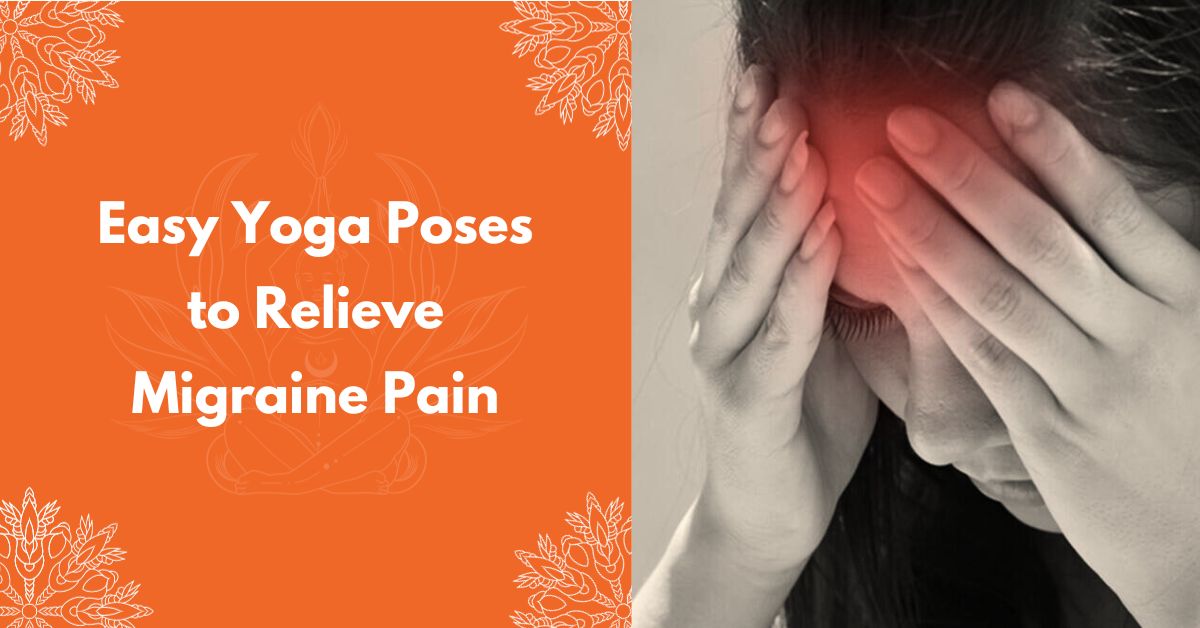
Easy Yoga Poses to Relieve Migraine Pain
“Discover the most effective and easy yoga poses to relieve migraine pain. Dive into the world of serenity and learn proven methods to ease migraine discomfort naturally. 🧘♂️🧘♀️”
Introduction
Yoga is a holistic method of improving one’s health and well-being, not merely a physical activity. For people suffering from migraines, the throbbing pain and sensitivity to light and sound can be debilitating. While medication is often the go-to solution, incorporating yoga into your routine can significantly alleviate migraine symptoms and improve your overall quality of life.
Understanding Migraines
Migraines are more than just headaches. They are neurological conditions characterized by intense headaches, often accompanied by nausea, vomiting, and extreme sensitivity to light and sound. Stress, lack of sleep, hormonal changes, and certain foods can trigger migraines, making it crucial to find effective coping mechanisms.
Cause of Migraines

Although the precise etiology of migraines is not entirely understood, a combination of genetic, environmental, and neurological factors is thought to be responsible. Some common triggers for migraines include:
- Genetic Predisposition: Migraines often run in families, suggesting a genetic link.
- Imbalance in Brain Chemicals: Fluctuations in serotonin and dopamine levels can trigger migraines.
- Hormonal Changes: Hormonal fluctuations, especially drops in estrogen, can lead to migraines, often in women.
- Triggers in Environment: Certain foods, drinks, strong smells, bright lights, and loud noises can initiate migraines.
- Stress and Anxiety: Emotional stress and anxiety are common migraine triggers.
- Sleep Disturbances: Lack of sleep or irregular sleep patterns can make a person more susceptible to migraines.
- Physical Factors: Intense physical exertion or straining can trigger migraines in some individuals.
- Weather Changes: Certain weather patterns, especially changes in barometric pressure, can trigger migraines.
How Yoga Helps
Yoga combines physical postures, breathing exercises, and meditation to create a holistic healing experience. When it comes to migraines, yoga can help by reducing stress, promoting relaxation, and improving blood circulation. Certain poses are particularly effective in relieving migraine pain.
Child’s Pose (Balasana)
The restorative pose known as the “Child’s Pose” encourages relaxation. Kneel on the mat, sit back on your heels, and extend your arms forward with your forehead touching the ground. This pose releases tension in the back, shoulders, and neck, common areas where migraine-related stress accumulates.
Forward Fold (Uttanasana)
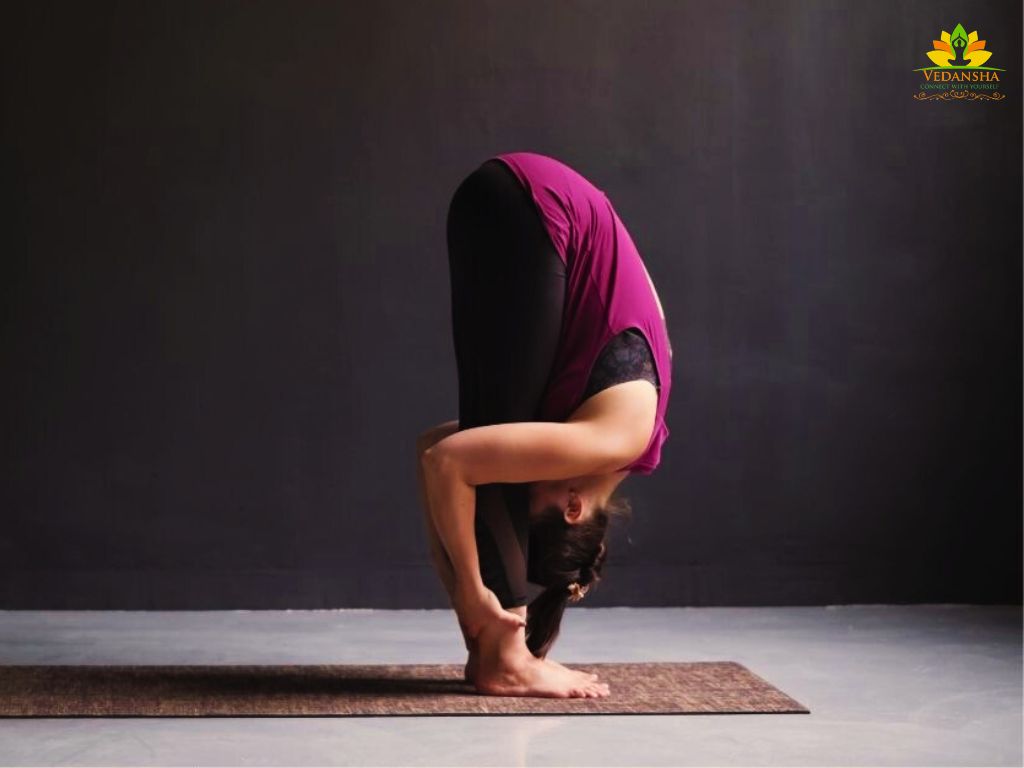
Forward Fold increases blood circulation to the brain, easing migraine symptoms. Stand with feet hip-width apart, exhale, and bend forward from the hips. Allow your hands to touch the floor or your shins, feeling the stretch along your spine and hamstrings.
Cat-Cow Pose (Marjaryasana-Bitilasana)
This dynamic flow between arching and rounding your back releases tension from the entire spine. Start on your hands and knees, inhale arching your back (Cow Pose), and exhale rounding it (Cat Pose). Repeat to promote better breathing, reducing anxiety and stress.
Legs Up the Wall Pose (Viparita Karani)
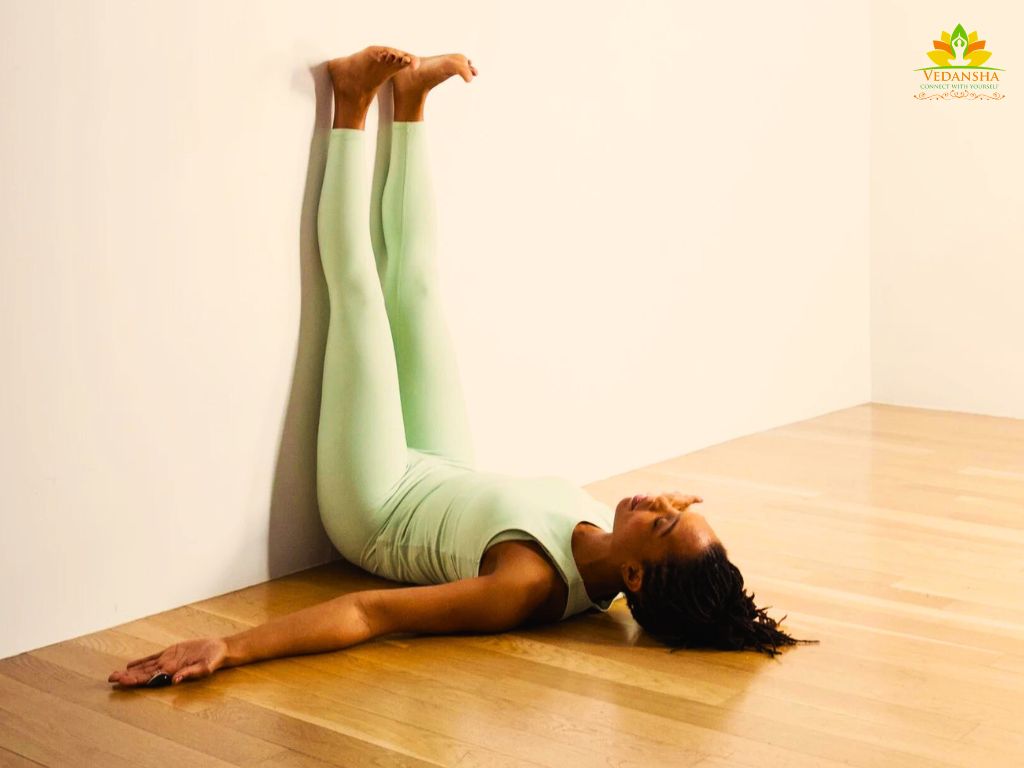
Legs Up the Wall Pose calms the nervous system by allowing blood to flow back to the heart, relieving headaches and migraines. Lie on your back and place your legs up against a wall, forming an L-shape with your body. Close your eyes, relax, and focus on your breath.
Bridge Pose (Setu Bandhasana)
The Bridge Pose strengthens the back and legs, reducing overall body tension. Lie on your back, bend your knees, and place your feet hip-width apart. Inhale, lift your hips towards the ceiling, interlace your fingers under your back, and hold the pose, breathing deeply.
Child’s Pose with Twist
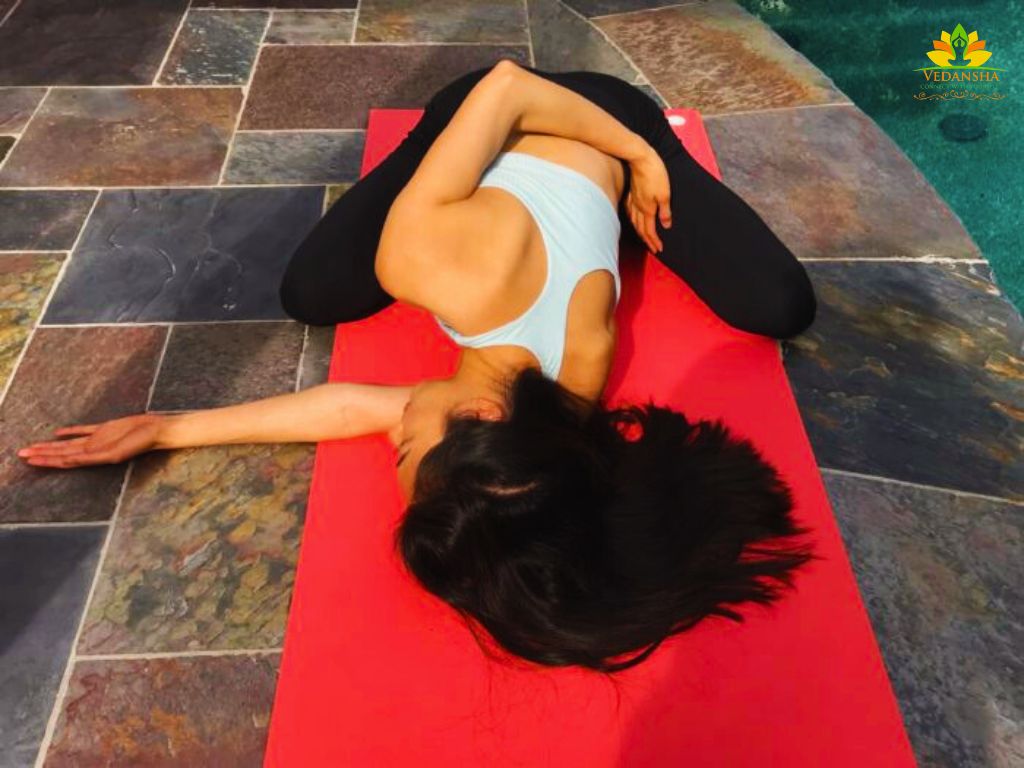
From Child’s Pose, inhale, and as you exhale, reach your right arm under your left arm, twisting your torso to the left. After a few breaths of holding, switch sides. This gentle twist releases tension in the spine and shoulders.
Seated Forward Bend (Paschimottanasana)
Sitting with your legs stretched out in front, reach for your toes. Keep your back straight and hold the position, feeling the stretch in your spine and hamstrings. This pose promotes relaxation and reduces stiffness.
Supine Twist (Supta Matsyendrasana)
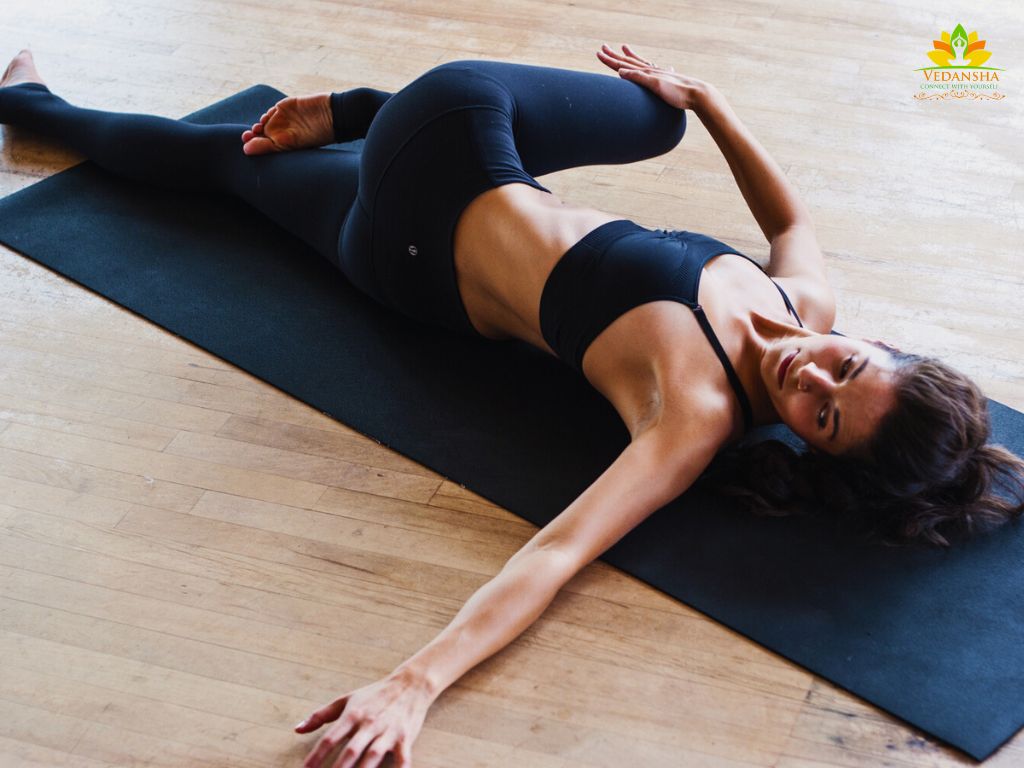
Lie on your back, bend your knees, and drop them to one side, keeping your arms outstretched. Turn your head in the opposite direction. This twist releases tension in the lower back and promotes spinal flexibility.
Standing Forward Bend (Uttanasana)
Stand with your feet together, exhale, and bend forward from your hips. Let your hands touch the ground or your shins. This standing version of the forward fold promotes relaxation and stretches the spine, reducing overall body tension.
Corpse Pose (Savasana)
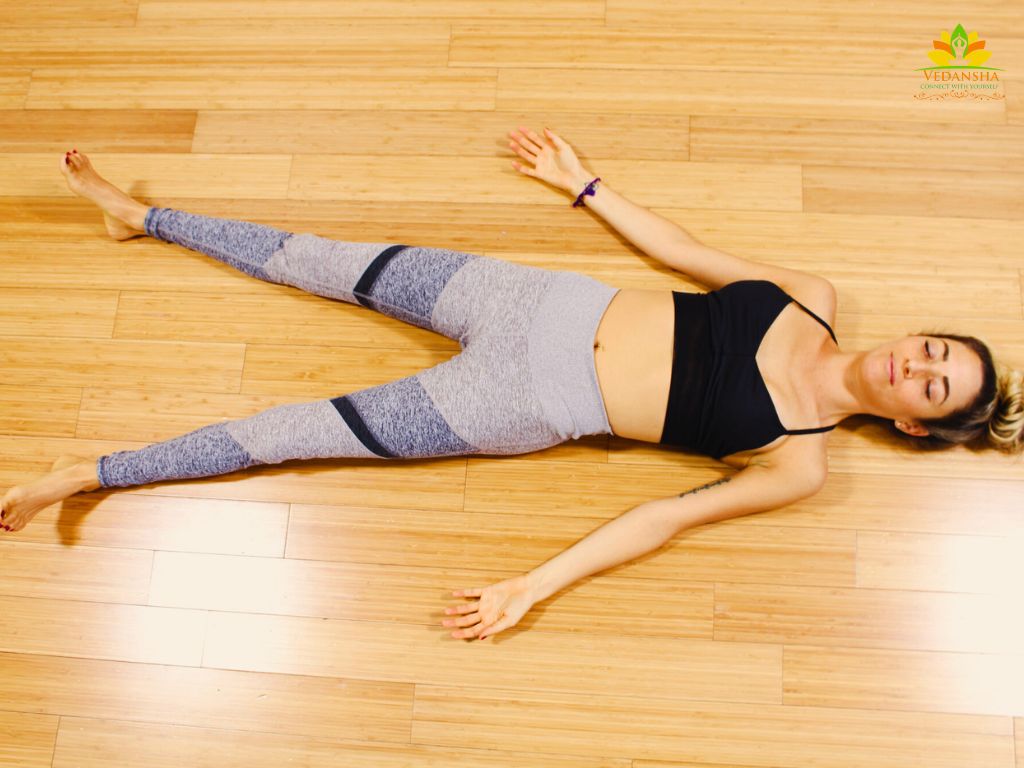
Corpse Pose is a relaxation posture that allows your body to absorb the benefits of the previous poses fully. Lie on your back with legs spread slightly apart and arms by your sides, palms facing up. Close your eyes and focus on your breath, letting go of any remaining tension.
Practicing Yoga Safely
Understanding Your Body
Listen to Your Body
Yoga is about self-awareness. Be attentive to your body’s signals during every session. If a pose feels uncomfortable or painful, modify it to suit your body. Overextending oneself can result in harm.
Respect Your Limits
Every person’s body is unique. Respect your body’s limits and don’t force yourself into poses that your body isn’t ready for. Progress takes time, and yoga is about the journey, not the destination.
Practicing Yoga Poses
Warm Up Properly
Begin each session with a gentle warm-up. Warming up prepares your muscles and joints, making them more flexible and less prone to injuries. Start with easy stretches and gradually move to more complex poses.
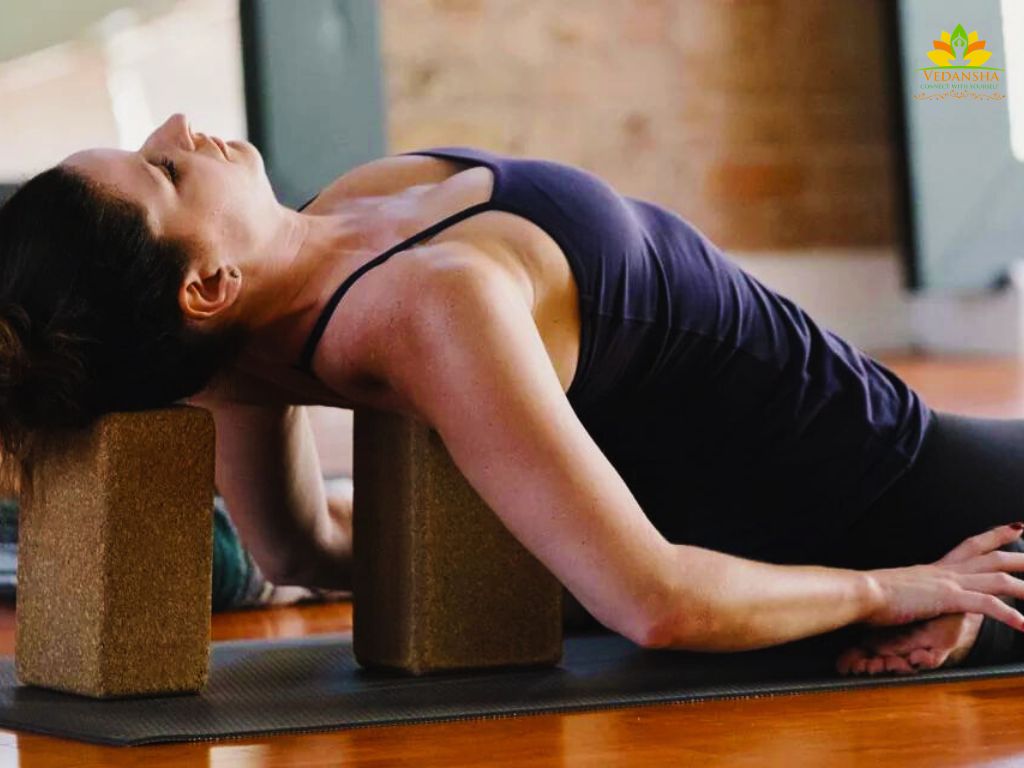
Use Props Wisely
Yoga props like blocks, straps, and bolsters are your allies. Don’t hesitate to use them, especially if you’re a beginner. Props aid in maintaining proper alignment, preventing strains and injuries.
Professional Guidance
Join a Yoga Class
Consider joining a yoga class, especially if you’re new. A certified instructor can guide you through the correct techniques, ensuring you understand each pose and practice them safely.
Consult a Healthcare Provider
If you have any underlying health conditions, injuries, or concerns, consult your healthcare provider before starting yoga. They can offer tailored advice, ensuring you practice safely.
Breathing and Mindfulness
Focus on Your Breath
Breath control is fundamental in yoga. Practice deep, rhythmic breathing throughout your session. Proper breathing not only enhances your poses but also calms your mind.
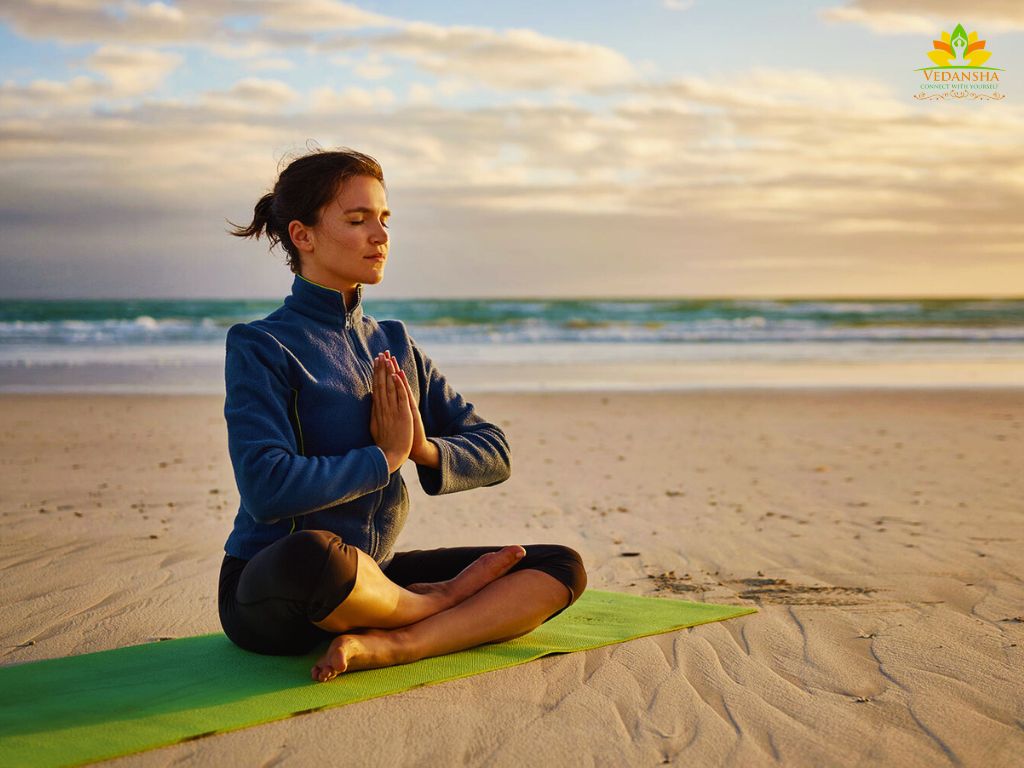
Stay Present
Yoga is not just about physical postures; it’s a mental practice too. Stay present in the moment. Be mindful of your movements, your breath, and let go of distractions. This mindfulness enhances both safety and the benefits you gain from yoga.
Post-Yoga Care
Cool Down
End your session with a proper cooldown. Gentle stretches and relaxation poses like Savasana (Corpse Pose) help your body transition from activity to a state of rest, preventing muscle cramps and promoting flexibility.
Hydrate and Nourish
After your practice, hydrate yourself and have a balanced meal or snack. Hydration aids in muscle recovery, and a nutritious diet supports your overall well-being.
Conclusion
Incorporating yoga into your routine can be a game-changer if you suffer from migraines. Its gentle yet effective approach can significantly reduce the frequency and intensity of migraine attacks, allowing you to lead a more fulfilling life.
FAQs Related to Yoga Poses to Relieve Migraine Pain
1. Can yoga completely cure migraines?
No, yoga cannot completely cure migraines, but it can significantly reduce their frequency and intensity, providing relief to many sufferers.
2. How often should I practice these yoga poses?
It’s recommended to practice these poses regularly, at least 3-4 times a week, for noticeable benefits.
3. Can beginners do these poses?
Yes, these poses are beginner-friendly. However, it’s advisable to join a yoga class or consult a certified instructor to ensure you’re doing them correctly.
4. Are there any specific breathing exercises for migraine relief?
Yes, deep breathing exercises like Pranayama can help in migraine relief. These exercises focus on calming the mind and regulating your breath, reducing stress and tension.
5. How long should each yoga pose be held?
Hold each pose for 30 seconds to 1 minute, focusing on your breath and relaxation. Do not rush; allow your body to ease into each position.

